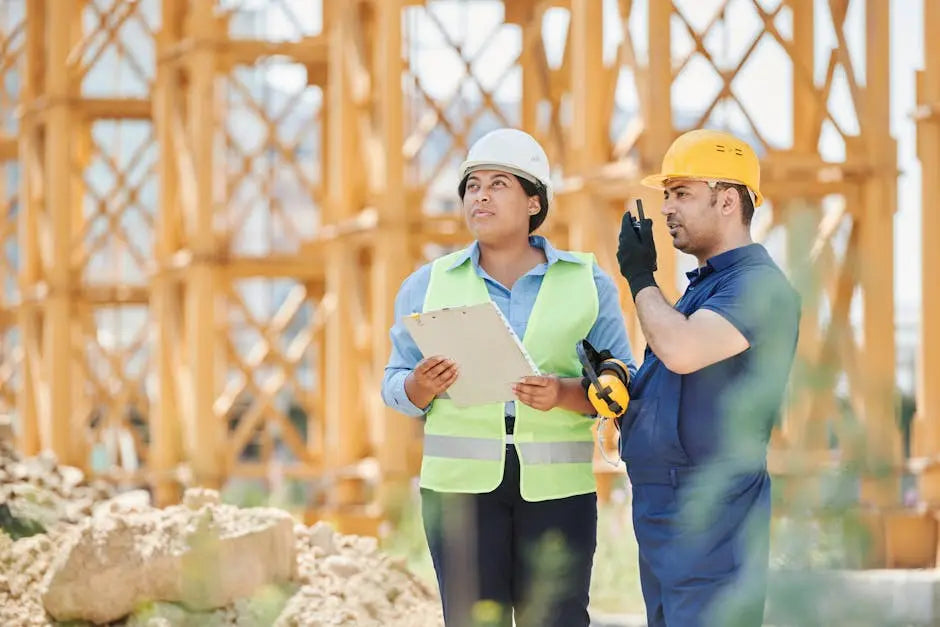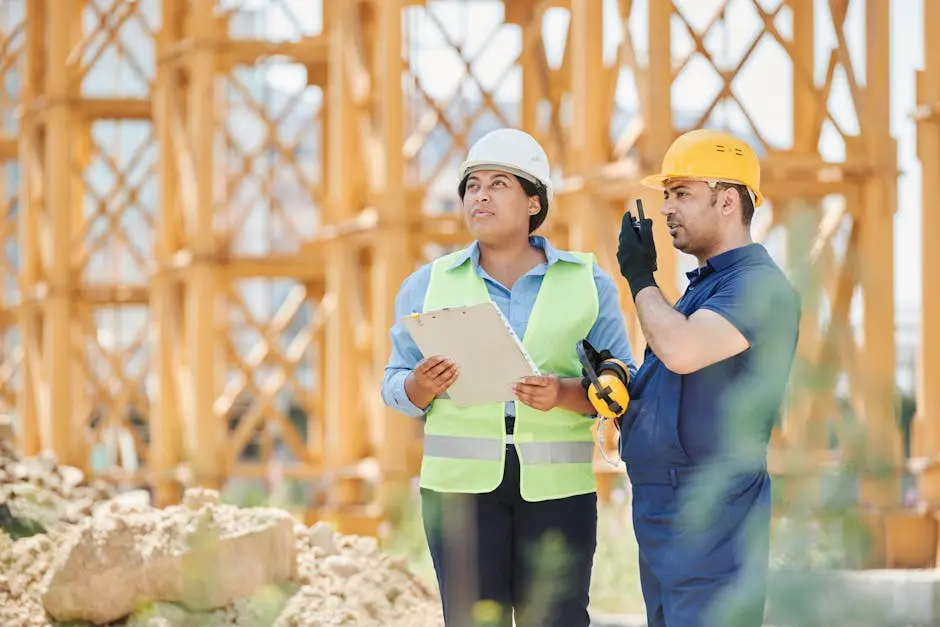Modern job sites are complex environments where the safety of workers is paramount. Communication devices play a crucial role in ensuring a secure and efficient workplace. In this article, we explore how these devices enhance safety on the job site, creating a robust framework for proactive risk management.
1. Instant Connectivity for Emergency Situations
Rapid response times are critical during emergencies. Communication devices provide instant connectivity, allowing workers to call for help or alert others to dangers without delay. Imagine the efficiency of immediately notifying all team members about hazardous conditions through the use of integrated systems like the CB300-D Digital Indoor Call Box. These tools enable alerts to the entire job site with a simple press of a button, ensuring that no time is wasted in mobilizing emergency responses and relocating personnel to safety.
The integration of real-time video feeds, such as those provided by VB400 body-worn cameras, adds another layer of safety. Capturing incidents as they happen helps emergency teams assess situations remotely and prepare adequately before arriving on site. This comprehensive approach to safety ensures that all workers are continually informed and can act promptly, whether it’s evacuating a building or initiating medical assistance.
2. Enhanced Coordination and Workflow Management
Efficient workflow management is vital for maintaining job site safety. Communication devices enable better coordination among teams, ensuring everyone is on the same page and tasks are executed safely. By employing two-way radios, supervisors can seamlessly relay task updates or hazard notices to their teams, thus promoting a synchronized work environment. With instant dialogue capabilities, misunderstandings are minimized, and collective efforts are streamlined toward shared safety goals. This level of connectivity ensures that every team member’s actions are aligned, significantly reducing the possibility of accidents caused by miscommunication.
3. Real-Time Hazard Reporting
Prompt reporting of hazards is essential to prevent accidents. Communication devices allow workers to quickly report potential risks, which can then be addressed immediately to avoid incidents. The AlertTech EA200-HD PTT Easy Assist Call Box is designed for durability and rapid response, making it an ideal tool for harsh environments. Its robust design allows it to withstand challenging conditions, providing reliable service even when subject to physical stress. With such devices, job sites can maintain an ongoing dialogue about hazards, facilitating the swift implementation of safety measures.
4. Streamlined Incident Documentation
Keeping track of incidents is crucial for learning and improvement. Communication devices facilitate the documentation process, ensuring accurate records are available for review. Devices equipped with cloud storage capabilities allow for seamless transfer of recorded data to central repositories. This ensures that all incident details are promptly logged and can be accessed anytime, aiding in detailed analysis and strategy formulation for future safety enhancements.
5. Facilitating Regular Safety Drills and Training
Regular safety drills and training enhance preparedness. Communication devices make it easier to conduct drills by ensuring all participants receive clear instructions and feedback. By leveraging reliable devices, such as the Curve Ecosystem, organizations can synchronize their training efforts, allowing each step of a safety drill to be communicated without delay. Engaging in such drills regularly keeps safety protocols fresh in employees’ minds, promoting quick, effective actions in the event of a real emergency.
6. Boosting Worker Confidence through Clear Instructions
Clear and precise instructions are essential for worker confidence. Communication devices provide a reliable channel to deliver instructions, reducing confusion and the likelihood of errors. Equipped with features like hands-free operation and noise suppression, these devices ensure that messages are received clearly, regardless of the noisy background environment typical on job sites. When workers receive unambiguous directions, their confidence in handling tasks increases, which directly contributes to a safer work environment.
7. Reducing Response Time to Safety Incidents
Quick response to safety incidents can prevent escalation. Communication devices help in swiftly notifying relevant personnel, ensuring timely intervention and minimizing risk. Through direct and continuous connectivity offered by systems like Motorola radios, alerts can be sent instantaneously to safety teams. This ensures that incident resolution begins immediately, maintaining the safety and well-being of the personnel involved.
8. Simplifying the Management of Remote Teams
Managing remote or large teams comes with unique safety challenges. Communication devices bridge the gap, allowing supervisors to effectively monitor operations and implement safety protocols. For example, the Wi-Fi call buttons and body-worn cameras available in the Motorola Curve Ecosystem provide tools for clear daily operations management. Supervisors can give out instructions and check compliance in real-time, no matter how spread out teams might be, thus ensuring that everyone is safe and informed.
9. Promoting a Culture of Safety Awareness
Fostering a culture of safety is pivotal for any job site. Communication devices encourage continuous dialogue about safety, ensuring it remains a top priority for every team member. By integrating devices that facilitate frequent check-ins and updates, such as those explored in our news section, job sites can keep safety issues at the forefront of daily operations. This constant reinforcement builds a strong, unified team mindset geared toward preventing accidents and enhancing overall safety awareness.


